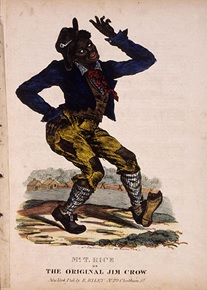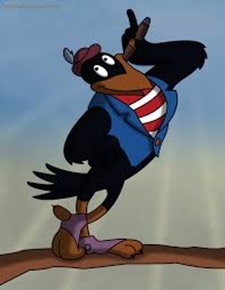Disney’s feature film Dumbo, released in 1941, tells the tale of a loveable baby elephant born with unnaturally large ears which he is consequently able to use for flying. One of the scenes presented in the film presents some highly problematic material however. Halfway through the film, Dumbo runs into a group of crows who assist in motivating, encouraging, and teaching him to fly. By aid of the “magic feather” the crows give him, Dumbo is then able to return to the circus and perform a revolutionary new act which crazes the nation.
Unfortunately, the crows Dumbo runs into are presented as African Americans. The very fact that Disney chose the particular characterization of crows to display black-coded stereotypes is questionable, but to make matters even worse, their leader’s scripted name is Jim Crow. The blatant reference to the offensive term of Jim Crow, the stereotyped language given to the crows, the voice casting of African Americans as the crows they’re playing, the animator behind their creation, and the role they play in the film’s plot all pose large problems which can’t be overlooked.
“Jim Crow” is a term full of racial connotations most often associated with the Jim Crow laws of the early 1900’s. Historian C. Vann Woodward notes that while, “The origin of the term ‘Jim Crow’ applied to Negroes is lost in obscurity. Thomas D. Rice wrote a song and dance called ‘Jim Crow’ in 1832, and the term had become an adjective by 1838.” The origin and etymology of the term comes specifically from a minstrel performance by Thomas D. Rice from the early 19th century. Although the exact origins of Rice’s inspiration for the Jim Crow character are unknown, it quickly became a sensational performance phenomenon. In his book Jump Jim Crow, W. T. Lhamon Jr explores the history and characteristics of the Jim Crow craze. He states that “No other American cultural figure stirred a legacy that endures such widespread censure as well as continual appropriation.” Such a widespread cultural figure can’t be referred to without indicating the negative racial stereotypes associated with it. A visual comparison between the two characters confirms the similarities between T. D. Rice’s representation of Jim Crow in minstrelsy and the animation of Dumbo’s crows. Even the poses, dance, and body language of Dumbo is a direct tribute to the original minstrel tradition.

Having already established a problematic visual representation of Jim Crow, the song “When I See an Elephant Fly” next adds a disturbing linguistic stereotyping of African American language. The main line of the chorus uses speech reminiscent of early minstrel songs: “But I be don’ seen ‘bout ev’rythang, when I see an elephant fly” It’s interesting to note that the lyrics of this song in current Disney songbooks have changed the lyrics to “But I think I will have seen ev’rything when I see an elephant fly.” The removal of dialect from the printed sheet music seems to reflect a recognition of the racist implications to it.
The controversial visual and linguistic stereotypes presented in Dumbo’s crows are further complicated by the voice casting. Jim Crow is voiced by white actor Cliff Edwards, while the rest of the crows are voiced by the African American choir Hall Johnson. (The same chorus Disney used in the racially controversial film Song of the South.) Whether it’s more problematic to have African American actors voicing racist stereotypes or to have a white actor voice a caricature of Jim Crow is difficult to determine. To have a white actor giving a racially black coded performance, even if animated, is the same act as a blackface minstrel show. And if the animated character being performed is Jim Crow himself, what makes this any different than T. D. Rice’s own performance a century prior to Dumbo’s release?
Works Cited:
Woodward, C. Vann. The Strange Career of Jim Crow. 3rd ed. New York: Oxford University Press, 1974. Print.
Lhamon, W. T. Jr. Jump Jim Crow: Lost Plays, Lyrics, and Street Prose of the First Atlantic Popular Culture. Cambridge, Mass: Harvard University Press, 2003. Print.
Disney Productions: The New Illustrated Disney Songbook. New York: Abrams, 1986. Print.
